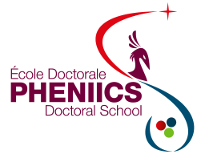Orateur
Quentin Luce
(Institut de Physique Nucléaire d'Orsay)
Description
The Pierre Auger Observatory is today the largest observatory built, with a ground surface of 3000 km², dedicated to the observation of ultra-high energy cosmic rays (>10^18 eV). At these energies we found two structures in the energy spectrum of the cosmic rays (CRs): the ankle (~ 4.10^18 eV) and the GZK cut-off (~5.10^19 eV) which are really interesting to understand the origin of the CRs and their propagation in the Universe. However the origin galactic or extra-galactic of the CRs is still one of their mysteries. To answer these questions we need to know the composition of the CRs. This information is currently given by the fluorescence detector of the observatory but it suffers a very low statistic (efficient at only 10% of its duty cycle). That’s why an upgrade of the ground detectors is currently being deployed and tested to measure the electromagnetic and muonic components of the atmospheric showers (produced when the CRs enters in the atmosphere). The aims of my thesis is to reconstruct the events seen by the observatory including these new observables to extract the energy, the mass and the arrival directions of the CRs, then tested different scenarios of the CRs’ origin.
Auteur principal
Quentin Luce
(Institut de Physique Nucléaire d'Orsay)



